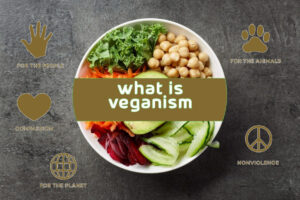Making the Transition: Your Journey to a Vegan Lifestyle
 Transitioning to a vegan lifestyle is a journey that looks different for everyone. Whether you’re motivated by environmental concerns, animal welfare, or health reasons, the path to veganism can be both rewarding and challenging. Here’s a comprehensive guide to help you make the switch sustainably and successfully.
Transitioning to a vegan lifestyle is a journey that looks different for everyone. Whether you’re motivated by environmental concerns, animal welfare, or health reasons, the path to veganism can be both rewarding and challenging. Here’s a comprehensive guide to help you make the switch sustainably and successfully.
The most successful transitions often happen gradually. Rather than attempting an overnight change, consider taking incremental steps. Begin by incorporating more plant-based meals into your current diet. Try designating one or two days a week as “vegan days” to experiment with new recipes and foods without feeling overwhelmed.
Education is Key
Understanding the “why” behind your choice strengthens your commitment. Take time to learn about:
– The environmental impact of animal agriculture
– The health benefits of a plant-based diet
– The ethical considerations of animal farming
– Basic nutrition principles to ensure a balanced vegan diet
This knowledge will not only reinforce your decision but also help you answer questions from curious friends and family.
Instead of dwelling on foods you’re eliminating, get excited about all the new foods you’ll be trying. Explore international cuisines that are naturally vegan-friendly, like Indian, Ethiopian, or Middle Eastern food. Experiment with ingredients you might have never tried before – jackfruit, nutritional yeast, tempeh, or different varieties of mushrooms.
Learn to veganize your favorite meals. Simple swaps can transform familiar dishes:
– Replace dairy milk with oat, almond, or soy milk
– Use flax eggs or commercial egg replacers in baking
– Try plant-based meat alternatives for familiar textures
– Discover the magic of nutritional yeast for cheesy flavors
Stock your pantry with vegan staples like:
– Legumes (beans, lentils, chickpeas)
– Whole grains (quinoa, brown rice, oats)
– Nuts and seeds
– Plant-based milk alternatives
– Nutritional yeast
– A variety of fresh and frozen vegetables
Social settings can be challenging for new vegans. Be prepared by:
– Checking restaurant menus in advance
– Offering to bring a dish to share at gatherings
– Communicating your dietary needs clearly but kindly
– Finding like-minded people through local vegan groups or online communities
While a well-planned vegan diet can meet all your nutritional needs, pay special attention to:
– Vitamin B12 (consider supplementation)
– Protein sources (legumes, tofu, tempeh, seitan)
– Iron-rich foods (leafy greens, fortified cereals)
– Calcium (fortified plant milk, leafy greens)
– Omega-3 fatty acids (flax seeds, chia seeds, walnuts)
Remember that perfection isn’t the goal. You might make mistakes or face challenges along the way, and that’s completely normal. Focus on progress rather than perfection, and celebrate small victories as you develop new habits.
Once you’ve made the initial transition, keep things interesting by:
– Following vegan food bloggers for inspiration
– Trying new recipes regularly
– Participating in vegan community events
– Sharing your favorite discoveries with others
– Continuing to learn and evolve in your journey
Transitioning to veganism is a personal journey that can be incredibly rewarding. By taking it step by step, arming yourself with knowledge, and being patient with the process, you’ll be better equipped to make lasting changes. Remember that every small choice makes a difference, and you’re part of a growing movement toward more conscious, sustainable living.